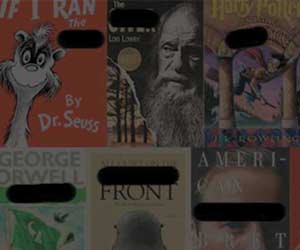Lady Chatterley's Lover
Select Format
Select Condition 
Book Overview
Lyric and sensual, D.H. Lawrence's last novel is one of the major works of fiction of the twentieth century. Filled with scenes of intimate beauty, explores the emotions of a lonely woman trapped in a sterile marriage and her growing love for the robust gamekeeper of her husband's estate. The most controversial of Lawrence's books, Lady Chatterly's Lover joyously affirms the author's vision of individual regeneration through sexual love. The book's power, complexity, and psychological intricacy make this a completely original work--a triumph of passion, an erotic celebration of life.
Format:Mass Market Paperback
Language:English
ISBN:0553212621
ISBN13:9780553212624
Release Date:January 1983
Publisher:Bantam Classics
Length:400 Pages
Weight:0.45 lbs.
Dimensions:0.9" x 4.2" x 6.9"
Customer Reviews
3 ratings
A literary classic of the 20th century
Published by Thriftbooks.com User , 19 years ago
Constance Chatterley, a beautiful and passionate woman, is deeply unhappy in her marriage to Sir Clifford Chatterley who became an invalid after having been injured in the First World War. His physical condition is mirrored in Constance's emotional paralysis. When she meets the gamekeeper Mellors, she finds refuge in his arms and feels regenerated. Together they shield themselves from the chaos of the outer world and move to the sanctum of the inner world of fulfilment. The character of Constance is an interesting one because there is a certain complexity in her: she is both in touch with nature, yet educated; sensitive, yet wise; female in her sensitivity, yet almost male in her strength and attitude. She is a woman with a social position who is drawn to an outsider of a lower class. The structure of the novel is also interesting because it shows three stages in Constance's relationship with her husband and Mellors. In the first phase, she denies her husband, responding to a failed marriage, she finds refuge with Mellors. Then begins the second stage when Constance regenerates in the peaceful world of her lover's hut. Finally in the third stage, she escapes the world of Wragby Hall as she leaves for a holiday to Venice. There she takes the resolution never to return to Clifford's world. This resolution is taken all the more easily by Constance because being away from Wragby Hall she can reconsider her commitment to Mellors while their relationship is gradually exposed as a scandal which really prevents her from returning to her husband. Then the novel's central struggle shifts from that between a Lady and a gamekeeper to that between Constance's and Mellor's commitment to each other and the forces hostile to their relationship. Constance's transformations occur in an set of tensions and an artistic dualism: tenderness against apathy, nature against culture, wood against stone, flesh against intellect, frankness against manipulation or fertility against sterility. These tensions strongly mark the first phase of the novel where Wragby Hall symbolises sterility and spiritual and emotional apathy, will and intellectual control; the hut symbolises the free play of the instinct and sensual pleasure, the haven of tenderness. The two worlds cannot interact: Clifford intrudes into nature with his mechanical wheelchair as much as Mellors is an intruder and outsider inside Wragby Hall. Perhaps the most striking opposition is that between silence and talk. As Constance and Mellors retreat into the sheltered world of the hut, the author insists on the stillness and the silence of the place, focuses on the internal and emotional feelings since both characters are fugitives from "the outer world of chaos." That's why enclosures are so present in the novel: the hut, the clearing, the cottage, an enclosed yard, a bedroom, as many shelters from psychological suffering. Mellors is "afraid of society" whereas Constance recoils from the "insanity of the whole civili
"Lady Chatterly's Lover" ranks with "Ulysses"
Published by Thriftbooks.com User , 23 years ago
I did not read this book until ten years ago - age forty for those who count - and found it a brilliant work. It touched on every aspect of life in that era, using a difficult premise at the focus. One reviewer called it 'sexist.' In that era, women were kept removed from the world, so men were the ones who made the initial contacts with reality and their sexuality. If Lawrence had written about that society in any other way, he would have been inaccurate. Lawrence shows the social conflict with both subtlety and brutality. Yet, Mellor IS a lover. There are sexual descriptions which are explicit, but within the coccoon of emotional bondings.The way that Lawrence has essayed the class structure of England in that era is brave and accurate in all ways. He makes the posturing of the aristocracy both frivilous and full of assinine criteria at the same time he understands the willingness of those in power to offer their lives in the defense of the general welfare.Lawrence notes again with unpleasant accuracy the detriments of an unchecked Industrial Revolution on the social structure of the time. He has Constance both witness these effects and suffer the olfactory damage. This is a literary work which has an effect across the full spectrum of the possible. Finely drawn characters searching for a better way to survive their lives in a scenario that is rife with obstacles and unpleasantness. He has the touch of the finest artist working with the lightest gossamer and the blunt force of an ogre swinging a stone axe.This was published in an abridged version because it was felt that the societal message it conveyed should be allowed to transit the draconian (by the less filtered standards of today) censorship of the era which DID focus on the sexual descriptions but could NOT stop the voice of social criticism any more than the same group could stop Dickens a few decades earlier.
Most Meaningful and Lovely of Lawrence's Novels
Published by Thriftbooks.com User , 24 years ago
As with any good novel there are several levels on which this book may be read. Taken factually, here a woman forsakes her incapacitated husband and takes the gamekeeper of their estate as her lover. Pretty ugly scenario! How can such a cruel action be justified? Lawrence is not afraid to take on this formidable challenge.To some people there is absolutely no issue here. When you marry, you commit yourself exclusively to your mate. Period! Case closed! But in real life, the matter is not so simple, unless you choose to make it so.On a deeper level a marriage inherently has hidden strings attached. It requires an honest effort by both partners to commit to the marriage, to sense their partner's needs, and to respond to them honestly and with sensitivity. If one mate is not perceptive, not doing their part, not "truly interested" in the marriage, then the marriage is in reality already dissolved, albeit not legally. This was the case with Lady Chatterly and her husband. It was also the case with the gamekeeper and his wife. Lawrence had to courage to recognize and to address this marriage problem, which probably is more common today than we would care to admit.The level at which I most liked this novel was in the descriptions of the actual physical encounters between the Lady and her lover. I have not counted them but there are perhaps four or five, all under different circumstances, all resulting in different degrees of satisfaction. Which suggests to me tht the sex act, in itself, is an almost neutral event. What gives it meaning are the attitudes and sensitivities that its participants bring to the occasion.At its deepest level sex is a reverent act, a sacrament. It is an uncompromising, fully trustful yielding of one's body to the care and love of another person. The result can be the most glorious feeling a human can experience. It can also be the most degrading feeling in the world. In this novel Lawrence follows the Lady and her lover through their progressing relationship. The novel can serve the reader as an inspiring view of the great beauty and joy that a loving relationship may eventually engender.Should teenagers read this book? In my opinion, no. Nevertheless, they will. But, like Shakespeare, they will not be able to absorb its wealth. I encourage them to save its reading for their later years when they are trying to bring new riches to their lives. Sort of like saving the icing on the cake, and eating it last. I think Lawrence would like that.
Lady Chatterley's Lover Mentions in Our Blog

The Role Books Played for 6 of The Biggest Stars of 2018
Published by Beth Clark • December 31, 2018
Instead of doing a typical "year in review" post like everyone else, we thought it would be fun to close the door on 2018 from a different angle: by looking back at the books that played roles in the careers of the year's biggest stars. Everybody has to start somewhere, but with hard work and a few lucky literary breaks, these household names didn't stop there.

In Honor of Banned Books Week, Let's Ban Banning Books Once and for All
Published by Beth Clark • September 24, 2018
Okay, maybe we can’t eliminate censorship (yet...#goals), but we can celebrate Banned Books Week with gusto by reading all of the stories that someone (or someones) tried to silence, destroy, or restrict access to. Here are 50 of the most frequently banned and/or most recently challenged books, along with the "who, why, and how" of literary censorship in America.






